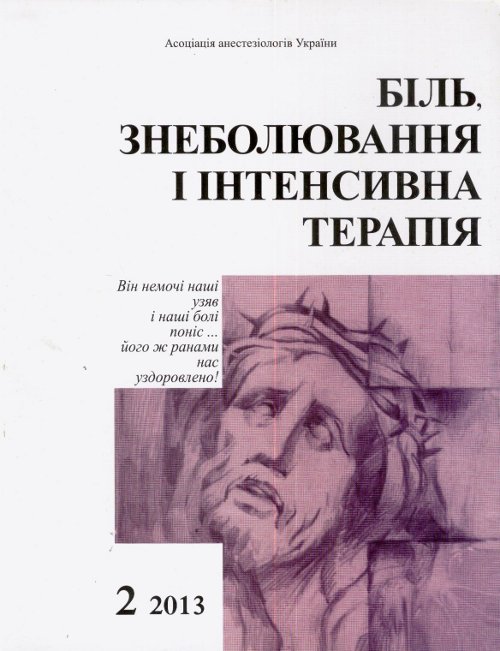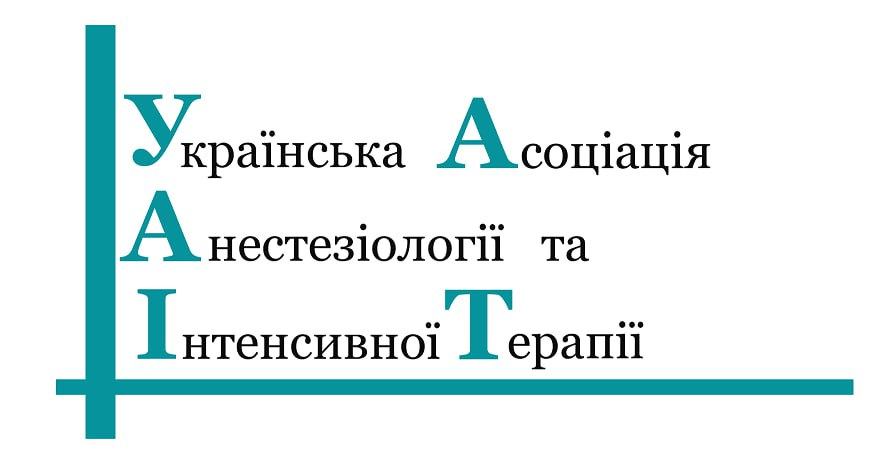Клиническая значимость и возможные способы коррекции гипергликемии при критических состояниях
DOI:
https://doi.org/10.25284/2519-2078.2(63).2013.106475Ключові слова:
стресорна гіперглікемія, критичні стани, інфаркт міокарда, інсульт, травмаАнотація
В огляді наведені критерії, механізми розвитку, патофізіологічні наслідки стресорної гіперглікемії — одного із проявів метаболічної дисфункції, що ускладнюють перебіг різних критичних станів, включаючи сепсис, механічну, термічну й операційну травму, інфаркт міокарда й ушкодження головного мозку.Посилання
Lewis К, Kane S, Bobek М et al. (2004) Intensive insulin therapy for critically ill patients. Annalas of Pharmacotherapy; 38 (7-8): 1243-51. https://doi.org/10.1345/aph.1d211
Carter EA (1998) Insulin resistance in burns trauma. NutrRev; 56: 170-6.
Deitch EA, Vincent J-L, Windsor A. (2002) Sepsis and multiple organ dysfunction: a multidisciplinary approach. W B.Saunders.
Jeevanandam M, Young DH, Schiller WR. (1990) Glucose turnover, oxidation, and indices of recycling in severely traumatized patients. J Trauma Infect Crit Care; 30: 582-9. https://doi.org/10.1097/00005373-199005000-00010
Shamoon H, Hendler R, Shervin RS. (1981) Synergistic interactions among antiinsulin hormones in the pathogenesis of stress hyperglycemia in humans. J Clin Endocrinol Metabol; 52: 1235-41. https://doi.org/10.1210/jcem-52-6-1235
Shervin RS, Sacca L. (1984) Effect of epinephrine on glucose metabolism in humans: contribution of the liver. Am J Phisiol; 247(2 Pt 1):E157-65.
Connolly CC, Steiner KE, Stevenson RW et al. (1991) Regulation o f lipolysis and ketogeneis by norepinephrine in conscious dogs. Am J Phisiol; 261: 466-72.
Montori VM, Basu A, Erwin PJ et al. (2002) Posttransplantation diabetes: a systematic review of the literature. Diabetic Care; 25: 583-93. https://doi.org/10.2337/diacare.25.3.583
Kwoun MO. Ling PR, Lydon E et al. (1997) Immunologic effects o f acute hyperglycemia in nondiabetics rats. JPEN; 21: 91-5. https://doi.org/10.1177/014860719702100291
Kehlet H, Brandt MR, Prange Hansen A (1979) Effect of epidural analgesia on metabolic profiles during and after surgery. Br J Surg; 66: 543-6. https://doi.org/10.1002/bjs.1800660807
Schricker T, Carli F, Schreiber M et al. (2000) Propofol/sufentanil anesthesia suppresses the metabolic and endocrine response during, not after, lower abdominal surgery. Anesh Analg: 90: 450-5. https://doi.org/10.1097/00000539-200002000-00039
Gore DC, Chikes D, Heggers J et al. (2001) Association of hyperglycemia with increased mortality after severe burn injury. J Trauma; 51: 540-4. https://doi.org/10.1097/00005373-200109000-00021
Giesecke K, Hamberger B, Järnberg PO (1988) High- and low-dose fentanyl anaesthesia: hormonal and metabolic responses during cholecystectomy. Br J Anaesth; 61: 575-82. https://doi.org/10.1093/bja/61.5.575
Parsons MW, Barber PA, Desmond PM et al. (2002) Acute hyperglycemia adversely affects stroke outcome: a magnetic resonance imaging and spectroscopy study. Ann Neurol; 52: 20-8. https://doi.org/10.1002/ana.10241
Weir CJ, Murray GD, Dyker AG et al. (1997) Is hyperglycaemia an independent predictor of poor outcome after acute stroke? Results of a long term follow up study. BMJ; 314: 1303-6. https://doi.org/10.1136/bmj.314.7090.1303
Williams LS, Rotich J, Qi R et al. (2002) Effects of admission hyperglycemia on mortality and costs in acute ischemic stroke. Neurology; 59: 67-71. https://doi.org/10.1212/wnl.59.1.67
Capes SE, Hunt D, Malmerg К et al. (2000) Stress hyperglycaemia and increased risk of death after myocardial infarction in patients with and without diabetes: a systematic overview. Lancet; 355: 773-8. https://doi.org/10.1016/s0140-6736(99)08415-9
Rovlias A, Kotsou S (2000) The influence hyperglycemia on neurological outcome in patients with severe head trauma. Neurosurgery;46(2):335. https://doi.org/10.1097/00006123-200002000-00015
Oliver MF, Opie LH. (1994) Effects of glucose and fatty acids on myocardial ischaemia and arrhythmias. Lancet; 343: 155-8. https://doi.org/10.1016/s0140-6736(94)90939-3
Zacharias A, Habib RH. (1996) Factors predisposing to median sternotomy complications. Chest 1996; 110: 1173-8. https://doi.org/10.1378/chest.110.5.1173
L’Ecuyer PB, Murphy D, Little JR et al. (1996) The epidemiology of chest and leg wound infections following cardiothoracic surgery. Clin Inf Dis; 22: 424-9. https://doi.org/10.1093/clinids/22.3.424
Davidson NJ, Sowden JM, Fletcher J. (1984) Defective phagocytosis in insulin controlled diabetics: evidence for a reaction between glucose and opsonising proteins. J Clin Pathol 1984; 37: 783-6. https://doi.org/10.1136/jcp.37.7.783
MacRury SM, Gemmel CG, Paterson К et al. (1989) Changes in phagocytic function with glycaemic control in diabetic patients. J Clin Pathol; 42: 1143-7. https://doi.org/10.1136/jcp.42.11.1143
Krinsley JS (2003) Association between hyperglycemia and increased hospital mortality in a heterogeneous population of critically ill patients. Mayo Clin Proc; 78: 1471-8. https://doi.org/10.4065/78.12.1471
van den Berghe G, Wouters P, Weekers F (2001) Intensive insulin therapy in critically ill patients. N Engl J Med; 345: 1359-67. https://doi.org/10.1056/nejmoa011300
McAlister FA, Majumdar SR, Blitz S et al. (2005) The relation between hyperglycemia and outcomes in 2,471 patients admitted to the hospital with community-acquired pneumonia. Diabets Care; 28: 810-5. https://doi.org/10.2337/diacare.28.4.810
Freire A, Bridges L, Umpierrez G et al. (2005) Admission hyperglycemia and other risk factors as predictors o f hospital mortality in a medical ICU population. Chest: 128: 3109-16. https://doi.org/10.1378/chest.128.5.3109
van den Berghe G, Wouters P, Weekers F et al. (2003) Outcome benefit of intensive insulin therapy in the critically ill: Insulin dose versus glycemic control. Crit Care Med; 31 (2): 359-66. https://doi.org/10.1097/01.ccm.0000045568.12881.10
Nasraway S (2006) Hyperglycemia during critical illness. JPEN; 30 (3): 254-8. https://doi.org/10.1177/0148607106030003254
Doenst T, Wijeysundera D, Karkouti К et al. (2005) Hyperglycemia during cardiopulmonary bypass is an independent risk factor for mortality in patients undergoing cardiac surgery. J Thorac Cardiovasc; 130: 1144. https://doi.org/10.1016/j.jtcvs.2005.05.049
Pittas AG, Siegel RD. Lau D. (2006) Insulin therapy and in-hospital mortality in critically ill patients: systematic review and meta-analysis of randomized controlled trials. JPEN; 30 (2): 164-72. https://doi.org/10.1177/0148607106030002164
Simpson F (2005) Parenteral vs. enteral nutrition in the critically ill patient: a meta-analysis of trials using the intention to treat principle. Intensive Care Med: 31: 12-23. https://doi.org/10.1007/s00134-004-2511-2
Sobotka L (Ed) (2000) Basics in clinical nutrition. Edited for ESPEN Courses. Galen 2nd ed, Prague.
A.S.P.E.N. Board of Directors and the Clinical Guidelines Task Force (2002) Guidelines for the use of parenteral and enteral nutrition in adult and pediatric patients. JPEN; 26(supplement 1):1SA- 138SA. https://doi.org/10.1177/0148607102026001011
Campos AC et al. (1990) Clinical use of total nutritional admixtures. Nutrition: 6: 347-56.
Richard C et al. (2000) Economic investigation of the use of three compartment TPN bag: Prospective randomized unblinded controlled study. Clin Nutr; 19: 245-51. https://doi.org/10.1054/clnu.2000.0106
Griffiths RD, Allen KD, Andrews FJ, Jones C. (2002) Infection, multiple organ failure, and survival in the intensive care unit: influence of glutamine-supplemented parenteral nutrition on acquired infection. Nutrition: 18 (7-8): 546-52. https://doi.org/10.1016/s0899-9007(02)00817-1
Powell-Tuck J, Jamieson CP, Bettany GE et al. (1999) A double blind, randomised, controlled trial of glutamine supplementation in parenteral nutrition. Gut; 45 (1): 82-8. https://doi.org/10.1136/gut.45.1.82
Wischmeyer PE, Lynch J, Liedel J et al. (2001) Glutamine administration reduces Gram-negative bacteremia in severely burned patients: a prospective, randomized, double-blind trial versus isonitrogenous control. Crit Care Med; 29 (11): 2075-80. https://doi.org/10.1097/00003246-200111000-00006
Bakalar B, Pachl J, Duska F et al. Parenterally administered dipeptide alanyl-glutamine dose-dependent effect on glucose metabolism in major trauma patients.
Shloerb P (2004) Glucose in parenteral nutrition: a survey of US Medical centers. JPEN; 28 (6): 447-52. https://doi.org/10.1177/0148607104028006447
Guenst JM, Nelson LD (1994) Predictors of total parenteral nutrition-induced lipogenesis. Chest; 105: 553-9. https://doi.org/10.1378/chest.105.2.553
Попова T.C., Шестопалов A.E., Тамазашвили Т.Ш., Лейдерман И.Н. (2002) Нутритивная поддержка больных в критических состояниях. М.: ООО Изд. дом “М-Вести”.
Known МО, Ling PR, Lydon Е et al. (1997) Immunologic effects of acute hyperglycemia in nondiabetic rats JPEN; 21: 91-5. https://doi.org/10.1177/014860719702100291
Ellger B, Debaveye Y, Vanhorebeek I et al. (2006) Survival benefits of intensive insulin therapy in critical illness: Impact of maintaining normoglycemia versus glycemia-independent actions of insulin. Diabetes; 55: 1096-105. https://doi.org/10.2337/diabetes.55.04.06.db05-1434
Михельсон В.А., Салтанов А.И., Шараева T.E. (2005) Специализированное клиническое питание - дополнительные возможности нормализации углеводного обмена в хирургии и интенсивной терапии. Вестн. интенс. тер.: 3: 68-74.
van Drunene JDE, Hofman Z, Kuipers H. (2003) The glycemic index (GI) of standard and diabetes-specific clinical nutrition products, www.numico-research.com. Clin Nutr; 22: S13-S14. https://doi.org/10.1016/s0261-5614(03)80049-3
Сепсис в начале XXI века. Классификация, клинико-диагностическая концепция и лечение. Патолого-анатомическая диагностика: Практ. рук-во. М.: Изд-во НЦССХ им. А.Н.Бакулева РАМН. 2004.
Dellinger RP, Carlet J, Masur Н et al. (2004) Surviving Sepsis Campaign guidelines for management of severe sepsis and septic shock. Crit Care Med; 32: 858-73. https://doi.org/10.1097/01.ccm.0000117317.18092.e4
Hofman Z, van Drunen J, Kuipers H. (2006) The glycemic index of standard and diabets-specific enteral formulas. Asia Рас J Clin Nutr; 15: 412-7.
##submission.downloads##
Опубліковано
Як цитувати
Номер
Розділ
Ліцензія
Авторське право (c) 2013 В. А. Руднов

Ця робота ліцензується відповідно до Creative Commons Attribution-NonCommercial 4.0 International License.
Автори, які публікуються у цьому журналі, погоджуються з наступними умовами:
a. Автори залишають за собою право на авторство своєї роботи та передають журналу право першої публікації цієї роботи на умовах ліцензії Creative Commons Attribution-NonCommercial 4.0 International License, котра дозволяє іншим особам вільно розповсюджувати опубліковану роботу з обов'язковим посиланням на авторів оригінальної роботи та першу публікацію роботи у цьому журналі.
b. Автори мають право укладати самостійні додаткові угоди щодо неексклюзивного розповсюдження роботи у тому вигляді, в якому вона була опублікована цим журналом (наприклад, розміщувати роботу в електронному сховищі установи або публікувати у складі монографії), за умови збереження посилання на першу публікацію роботи у цьому журналі.
c. Політика журналу дозволяє і заохочує розміщення авторами в мережі Інтернет (наприклад, у сховищах установ або на особистих веб-сайтах) рукопису роботи, як до подання цього рукопису до редакції, так і під час його редакційного опрацювання, оскільки це сприяє виникненню продуктивної наукової дискусії та позитивно позначається на оперативності та динаміці цитування опублікованої роботи (див. The Effect of Open Access).








